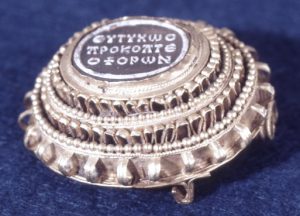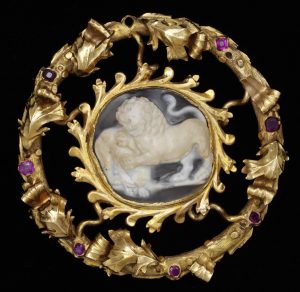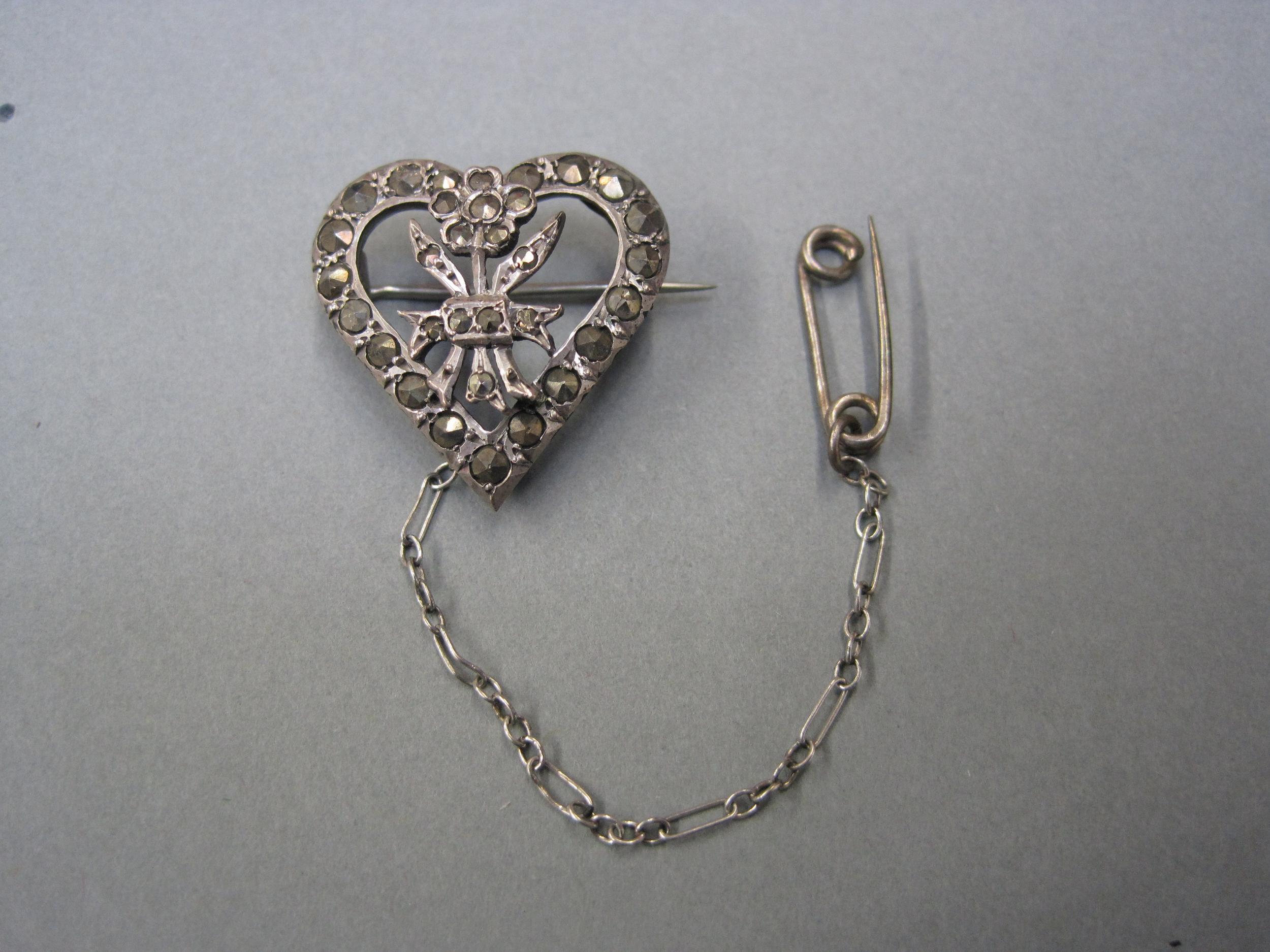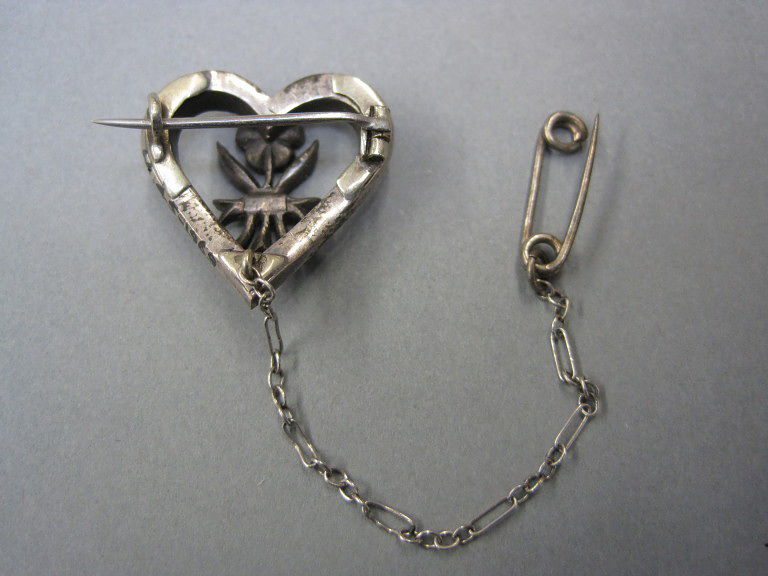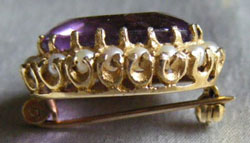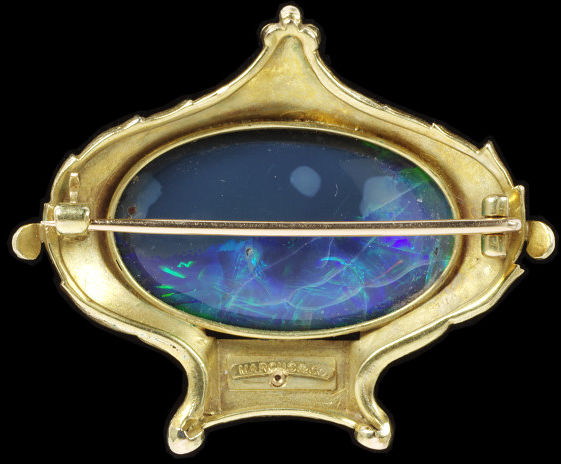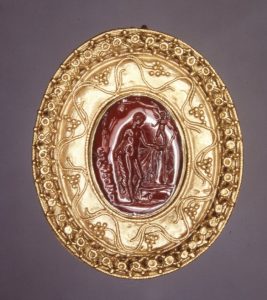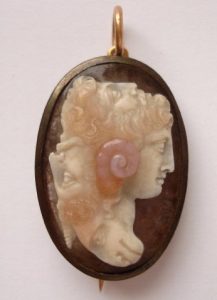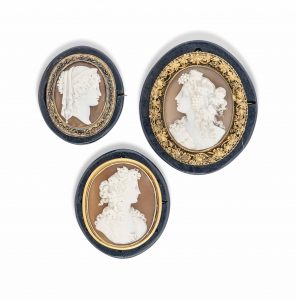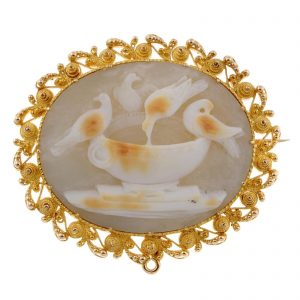Cameo Brooches. Brooches are probably the most popular setting for a cameo. In the early 19th Century brooches set in gold or silver were luxury items and were the privilege of the rich so brooches of this era are usually of high quality. In ancient times a brooch was also known as a fibula or broach.
Brooches were often used as both fashion accessories or as fastenings for cloaks and other garments.
Dating Cameo Brooches
Clasps
Clasps are one of the things which should be examined first. During the Georgian and Victorian era a “C” Clasp was commonly used until it was replaced by a safety clasp around 1900. The “C” Clasp takes it’s name because it looks like the letter C.
Early “C” Clasps tended to have longer pins as in the image of the Georgian “C” Clasp example. The pin sticks out beyond the edge of the brooch and is very long compared to the overall length of the brooch. The image of the Victorian “C” clasp is still long, but not as long as the Georgian clasp. The Victorian brooch can be accurately dated as it has the silver hallmark for Birmingham 1892.
A form of safety catch was used during the late 19th century. It was very similar to the “C” clasp but was extended to eliminate the risk of losing the brooch.
An application was filed on March 8, 1916. Serial N 0. 82,790 for an improved safety catch. The following is an excerpt of that Patent.
“To all whom it may concern:
Be it known that I, FRANK E. FARNHAM, a citizen of the United States, residing at Providence, in the county of Providence, State of Rhode Island, have invented certain new and useful Improvements in Safety- Catches forPins or Brooches, of which the following is a specification.
My invention is an improved safety-catch or guard for the pins of brooches and similar’articles of jewelry to secure them from accidental unfastening. The objects of my improvement are to simplifythe construction, reduce the cost of manufacture and to render the device more eflicient for the purpose intended and more durable in use.” Reference: Google
The Art Nouveau brooch by Marcus & Co also has a “C” clasp but here the pin only goes to the end of the brooch itself.
The other thing to note is the hinge. Prior to 1920 brooches tended to have tubular hinges. Modern brooches have machine made round hinges. These can also be seen in the images above.
Having said all that, it is not always possible to date accurately from the clasp alone. During the years clasps can get broken and replaced, so a modern clasp does not necessarily mean that the brooch is not old. Also, sometimes later designers may have used older type clasps. Whenever examining the piece you should also look for signs to see whether the clasp is original to the brooch. Many cameos during the Victorian era could be used as pendants as well.
Cameo Brooch Styles
The style of a brooch can also help to identify the age of the piece but it also needs experience with handling of the item as fashions come and go. Victorians would copy styles from previous eras just as we would today. One of the ways to tell them apart is whether they are hand-made or mass produced. That is really only possible to tell from handling an item and from experience so it will not be covered here.
In general, during the years 1800 to 1810, the styles of cameo brooches followed neo-classicism. This style was encouraged by Napolean. Influences were adopted from the Ancient Greeks, Romans and Egyptians. This was probably due to Napoleons travels to these parts of the world.
Shell cameos became very popular during this era with many depicting mythical creatures and classical groups. Sometimes genuine artifacts were set in gold with designs of laurel leaves, Greek keys and palmettes. Mosaics also became popular and could also be used to surround a cameo.
Frames made of silver or gold cannetille, similar to filigree, became popular around 1830 and these would often be a feature of cameo brooches.
The early Victorian era, 1837 to 1860 saw a change in jewellery styles to that of Romanticism. Seed pearls, grapes, bows, mother-of-pearl, tendrils and leaves. Tiny flowers and enamel, especially in sky blue and navy were also popular so this is another thing to look for in the cameo brooches mounts.
After the death of Prince Albert in 1861, black became customary in both clothing and jewellery. If cameo brooches are carved in jet, black onyx or black glass, it is very likely to be between 1861 and 1901 although mourning brooches were also used before this date.
A revival of neo-classicalism emerged once again, resulting in cameo brooches featuring gods, goddesses and other classical figures.
Advances in technology meant that precious stones could be cut to fit any settings. Stones such as garnet, turquoise and coral also became popular in cameo brooches.
Between the 1860’s to 1880’s, Italian cameos mounted bold hardstone cameos into fine yellow gold. Twisted wirework was popular and popular subject matters were gods and goddesses such as Apollo, Diana, Mars and Mercury.
The 20th century saw a decline in cameos. The quality of those that were made dwindled due to mass production but recently they are beginning to become popular again.
